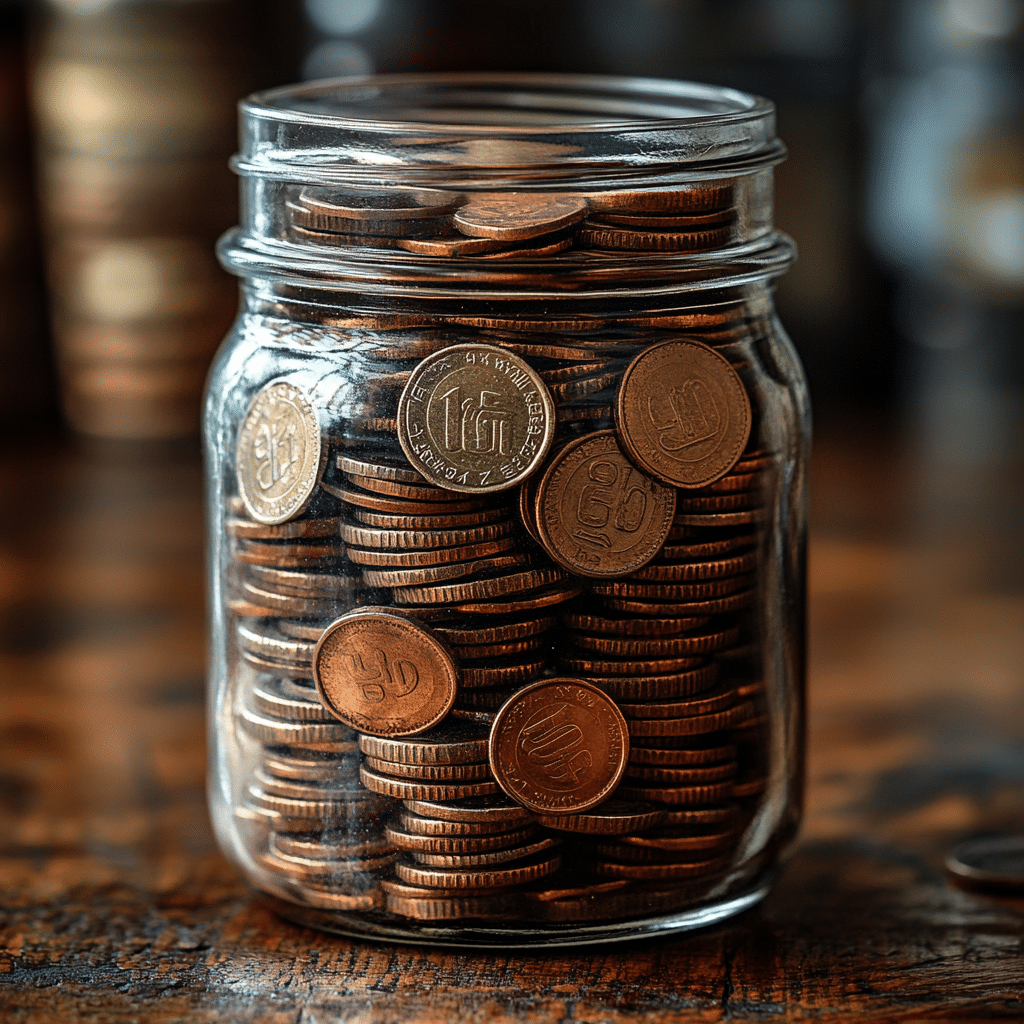Understanding PMI cost is vital for homebuyers, especially those putting down less than 20% on their homes. That Private Mortgage Insurance (PMI) is an extra expense that can seem like a thorn in your side. But if you get the facts straight, you can maneuver through the mortgage world like a pro. Let’s explore the ins and outs of PMI so you’re well-equipped to make savvy financial choices.

The Essential Breakdown of PMI Costs
Average PMI Rates Explained
PMI rates can puzzle even the most seasoned buyers. Typically, they fall between 0.3% to 1.5% of your original loan amount each year. Now, what does this mean in real dollars? Let’s break it down. If you borrow $300,000 with a 0.5% PMI rate, you’re looking at roughly $1,500 annually, or about $125 monthly. That can add up, so it’s crucial to factor this into your monthly budget.
Factors Influencing PMI Costs
Several factors can affect your PMI cost, such as your credit score and the loan LTV ratio (Loan-to-Value ratio). Generally, if you’ve got a higher credit score, you’re in luck! Folks with scores over 760 might see lower PMI rates compared to those with scores below 620. Also, the LTV ratio matters: the higher your down payment, the lower your LTV and, ideally, your PMI costs. For example, if you put down 15% versus 5%, your risk level looks different in the eyes of lenders.
Types of PMI: Borrower-Paid vs. Lender-Paid
Next up is understanding the types of PMI—borrower-paid and lender-paid. Borrower-paid PMI is baked into your monthly mortgage payment and can sometimes be canceled if you gain 20% equity in your home. It takes some time, but those extra bucks can lead to savings. On the flip side, we have lender-paid PMI, which is usually a one-time thing at closing, added to your mortgage interest rate. This means no monthly payments but a higher interest rate, which can haunt you long-term.
Frequently Asked Questions About PMI
You might have questions about what happens if you refinance your mortgage. When you decide to refinance, new PMI costs get calculated based on updated LTV ratios and your credit score. If you’ve improved your financial standing since the original purchase, that could mean lower PMI costs—score!

PMI Costs vs. Other Home Insurance Values: Understanding Replacement Cost vs. Actual Cash Value
When figuring out PMI cost, it’s also wise to understand the difference between replacement cost and actual cash value (ACV). Knowing this can impact your PMI and overall insurance strategy.
Replacement Cost Defined
Replacement cost is the price to replace your home or its belongings at current market rates. For instance, a house bought for $350,000 may need $450,000 to replace due to inflation and higher material costs. Having a grasp on this figure can give you an upper hand when discussing PMI and insurance coverage.
Actual Cash Value (ACV)
In contrast, ACV considers depreciation. Let’s say our $350,000 home drops to $300,000 in value because of age or wear. If damages occur, the insurance payout reflects that lesser amount, impacting your financial stability if you need repairs or replacements.
ACV vs. Replacement Cost in PMI Scenarios
Homebuyers often overlook how these values impact insurance, including PMI costs. Are you focusing solely on PMI? It’s key to understand how your home’s evaluation can shift if you’re ever refinancing or seeking a new insurance plan. For example, Sarah bought her home for $200,000 with a 10% down payment. When the value appreciates to $250,000, understanding replacement cost vs actual cash value helps her navigate potential insurance claims that could affect her overall asset evaluation.
The Interplay of PMI Costs and Refi Costs: What to Anticipate
Thinking about refinancing? You should seriously look at how refi costs roll into your plan, along with your PMI expenses.
What Are Refi Closing Costs?
Refinancing isn’t just a quick and easy road. The refi closing costs usually range from 2% to 5% of your new loan amount. For a $300,000 refinance, fees could land anywhere from $6,000 to $15,000. Ouch! This figure is crucial to consider as it includes structuring your existing PMI.
Weighing the Costs: Refi vs. PMI Savings
Keep your eyes on the prize! If the market offers lower interest rates, your monthly savings may outweigh the initial costs to refinance. Imagine slicing your interest from 4.5% down to 3.5%—that kind of drop can translate into real financial relief, even after factoring in PMI adjustments.
Impact of Loan LTV Ratio on Refi Costs
Post-refinance, a lower LTV ratio may qualify you for a different PMI tier. If your equity rises above 20%, you may eliminate PMI altogether! Knowing how current home values stack up against your mortgage can guide you on whether refinancing is worth your while.
Innovative Wrap-Up
Getting a handle on PMI costs can feel overwhelming but can pave the way for a solid homeownership experience. Knowledge about insurance valuations, refinancing strategies, and your loan’s LTV ratio ensures you face financial challenges confidently. By staying informed, you can make smart decisions that positively impact your homeownership journey and future investments.
You can dive deeper into topics like homestead exemption in Oklahoma, or check out Josh Davis ‘s Insights on rates. Remember, being a well-rounded buyer is about having all the information you need right at your fingertips. Understanding the difference between replacement cost Vs. actual cash value is just one piece of your journey. Happy house hunting!
PMI Cost Breakdown That Every Homebuyer Needs to Know
Discovering the PMI Cost
Did you know that PMI, or private mortgage insurance, can add a hefty chunk to your monthly expenses if you’re putting down less than 20%? In fact, the average PMI cost ranges from 0.3% to 1.5% of the original loan amount each year. This means if you’re borrowing $300,000, you might pay anywhere from $900 to $4,500 annually. So, it’s crucial to understand how these costs pan out in your overall budgeting. And, if you’re curious about the cost in relation to your mortgage rate, check out this handy guide on how to define basis Points.
In an interesting twist, PMI doesn’t stay the same over time. As you lower your mortgage balance, this cost can decrease. Plus, some lenders offer a one-time upfront PMI fee that can be rolled into the loan—kind of like how you might grab a movie ticket at Emagine lakeville before diving into your favorite flick. This flexibility might give you some breathing room as you adjust to your new financial landscape.
The Hidden Costs Behind PMI
Here’s a fun tidbit: many homebuyers don’t realize that PMI premiums might be tax-deductible in some cases! So, if you’re buying a home during tax season, it could be worth checking your eligibility for this break. However, you’ll want to discuss this with a tax professional to get the full scoop. And while you’re sorting through your financial options, make sure to weigh the benefits of different loan types, especially when comparing rate Vs APR.
Speaking of comparisons, let’s talk rates. Did you know that the type of loan you choose can influence your PMI cost? For instance, Veterans Affairs (VA) loans don’t require PMI at all, which is quite the perk! On the flip side, if you’re looking for a streamlined refinancing option, checking out the current Irrrl rates can be a game changer to lower those monthly payments. It’s like leveling up your finances, much like upgrading your Tamagotchi—taking good care of it will lead to some rewarding outcomes!
Understanding PMI costs isn’t just about numbers; it’s about making informed choices that can save you money in the long run. So, as you dive deeper into home buying, keep these tidbits in your back pocket! They may just help you navigate those tricky waters ahead.




